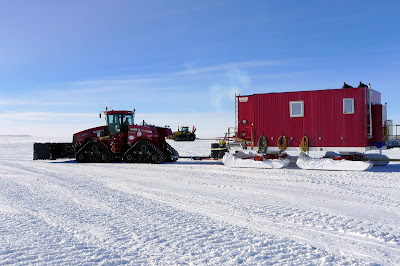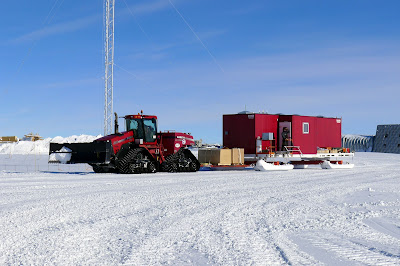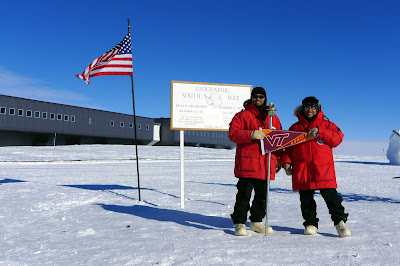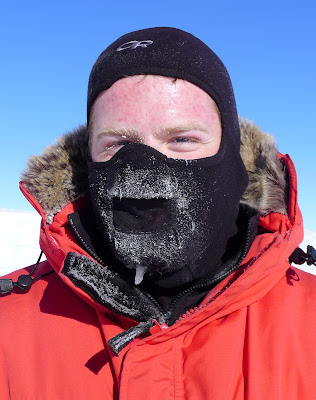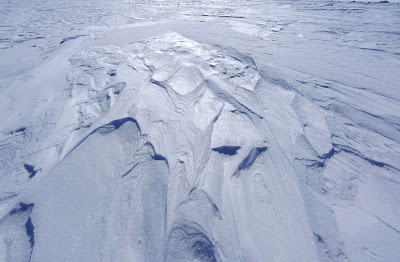 As mentioned previously, we spent lots of time making pits and trenches for the equipments and cables. All the cables that are connected between the main electronics and the sensors are placed in the trenches to keep them from being damaged.
As mentioned previously, we spent lots of time making pits and trenches for the equipments and cables. All the cables that are connected between the main electronics and the sensors are placed in the trenches to keep them from being damaged. We use snowmobiles very often to commute back and forth between the station and the work site and to transport our cargo. A light-weight sled is very useful for carrying heavy loads.
A photo shoot with the Virginia Tech team members after finishing the System 3.
This tracked tractor with a big container is used to serve as trans-antarctic transportation ("Antarctic Traverse") to transport retrograde cargo, fuel, supplies, etc. between the South Pole and McMurdo Station. I heard it usually takes about a month to make the trans-antarctic journey. What an adventure!
I met a German expedition team who traveled all the way from an Antarctic station near the Antarctic coast to the South Pole by four pickup trucks.
At the Pole, I took some pictures with Kshitija holding a Virginia Tech banner and a Korean flag.




